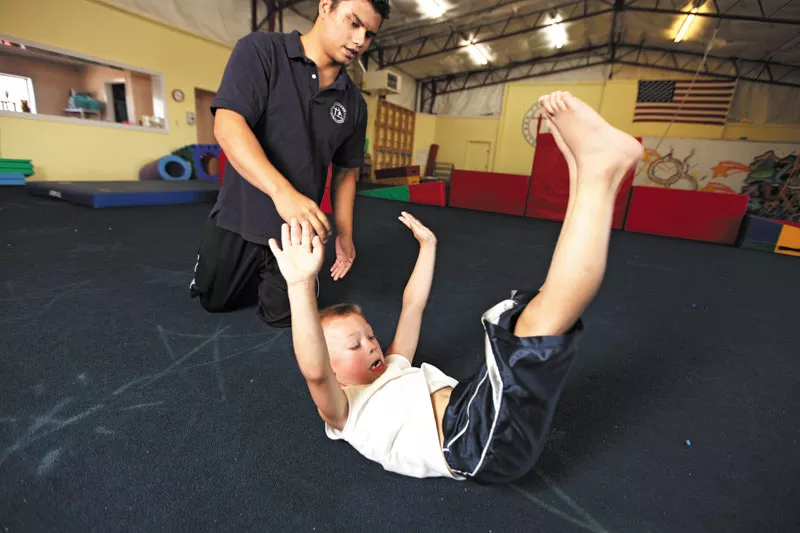Agility is what keeps an off-balance football player from going head-first into the turf. It’s what keeps an errant diver from belly-flopping into an Olympicsize swimming pool.
It can be trained in many ways, but Chris Sarquillo prefers gymnastics. As a coach at Spokane Gymnastics, he’s seen his students start as gymnasts and go on to be stars in soccer and other sports where quick movement is key.
“Kids who start in gymnastics end up being the top performers in any sport,” Sarquilla says. “If you started in gymnastics and went to something like [soccer], it just makes you more agile.”
Or, as a poster on the gym’s wall puts it: “Life needs agility.”
Porter, a 5-year-old who lives in Spokane, still has a long time to decide what direction he wants to take his athleticism. But as he bounds up and down on a trampoline and swing effortlessly from the gym’s exercise bars on a Friday morning, Sarquilla has no doubts about his dedication to gymnastics.
“I want to be an Olympian,” says an excited Porter.
There are three components to gymnastics, says Sarquilla: balance, strength and flexibility. The kids who come to him often turned from jumping on the bed or cartwheeling down store aisles to gymnastics. The gym has recently expanded its offerings to include the growing sport of Parkour.
But not everyone is a natural gymnast — or five years old. No matter. Agility can be improved at any age. And working on your agility may just keep you safe no matter what exercise you choose.
TRY THIS: HOPS
This one’s simple: Do a standing hop from a raised platform and back onto the ground. In the gym, Porter jumps on a special cushion, but you could use a platform of two-by-fours or a street curb. If you feel really confident, you can do it as you’re going up stairs, Sarquilla says.
“[This exercise] trains your muscles to work on the weight transfer when you’re going up and down,” Sarquilla says.
The key is to keep your weight on the balls of your feet as you jump, Sarquilla says. Training your body to land safely is important for athletes in any sport that involves running and jumping.
“If they’re no good on their feet, they’re going to have a hard time,” Sarquilla says. “They’re going to roll an ankle, they’re going to break an ankle.”
AND THIS: DIVE ROLL
A dive roll is a common bail-out move for athletes who are going down.
“Any time you’re going to fall, any time you’re going to bail on something” a roll will save you, says Sarquilla. “It takes your weight, [and] rather than going into the floor, you go into a roll.”
Start with your arms up and your chin tucked in, then pitch forward, looking at your belly button as your roll on your back. Mid-way through you should be lying on your back and have your toes upwards and your arms at an angle.
Use your momentum to get you back on your feet as you finish.















